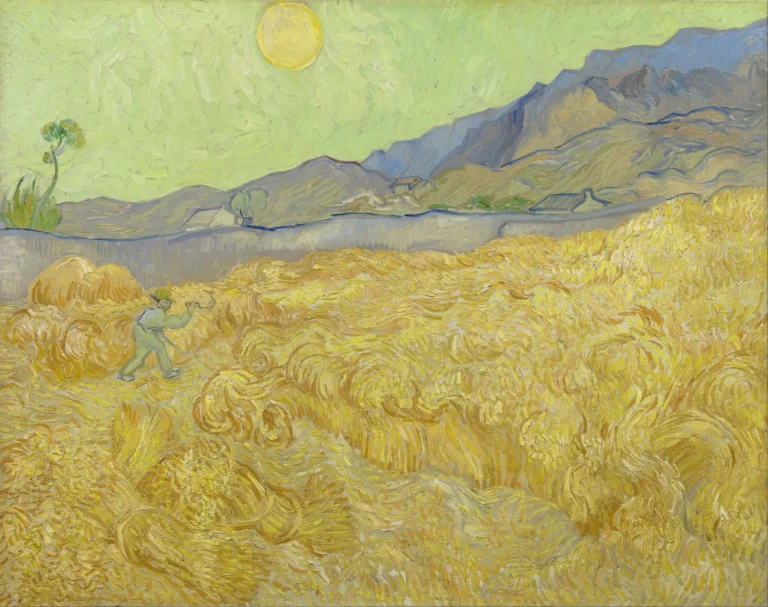Wheatfield With A Reaper
Vincent van Gogh created the Wheat Field with a Reaper series in 1889, a poignant exploration of nature and mortality. The paintings depict a solitary reaper in a sunlit wheat field, rendered in vivid yellows with bold, impasto brushwork. They reflect Van Gogh's profound symbolism, portraying the cycle of life and death with an almost serene quality. Painted during his time at the asylum in Saint-Rémy-de-Provence, the artwork encapsulates both the beauty of the natural world and his internal battles, marking it as a significant contribution to Post-Impressionism.
1889
About the Artwork
The Wheat Field with a Reaper series stemmed from Vincent van Gogh's time at the asylum in Saint-Rémy-de-Provence, where he sought refuge from his turbulent mind. During this period, he found solace in the surrounding landscapes and saw the wheat fields as a metaphor for life itself. Through three different versions, created between late June and September 1889, Van Gogh captured a reaper harvesting wheat under a bright, golden sun. The scene conveys a message of life's transience, symbolizing death not as a grim endpoint but as a natural process, illuminated by the sun’s warmth. Van Gogh's letters to his brother, Theo, provide insights into his thoughts and emotional state as he battled mental health issues while producing such radiant works.
Did You Know
The reaper in Van Gogh’s painting represents a duality of life and death, embodying both the labor of harvest and the inevitability of mortality, depicted with a sense of tranquility rather than despair.
Yellow, the dominant color in the paintings, symbolizes hope and brightness. For Van Gogh, it was essential to evoke emotions and illustrate the vibrancy of life despite personal struggles.
Van Gogh’s time at the asylum proved to be a crucial period for his creativity. Although he faced intense mental health challenges, this time resulted in some of his most profound and beautiful works, including this series.










